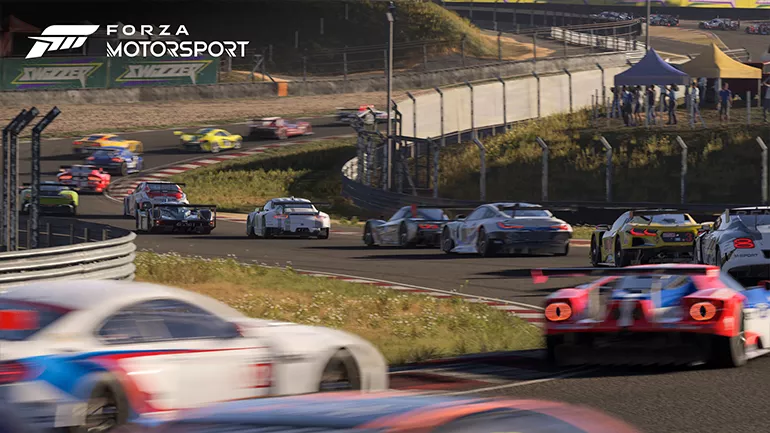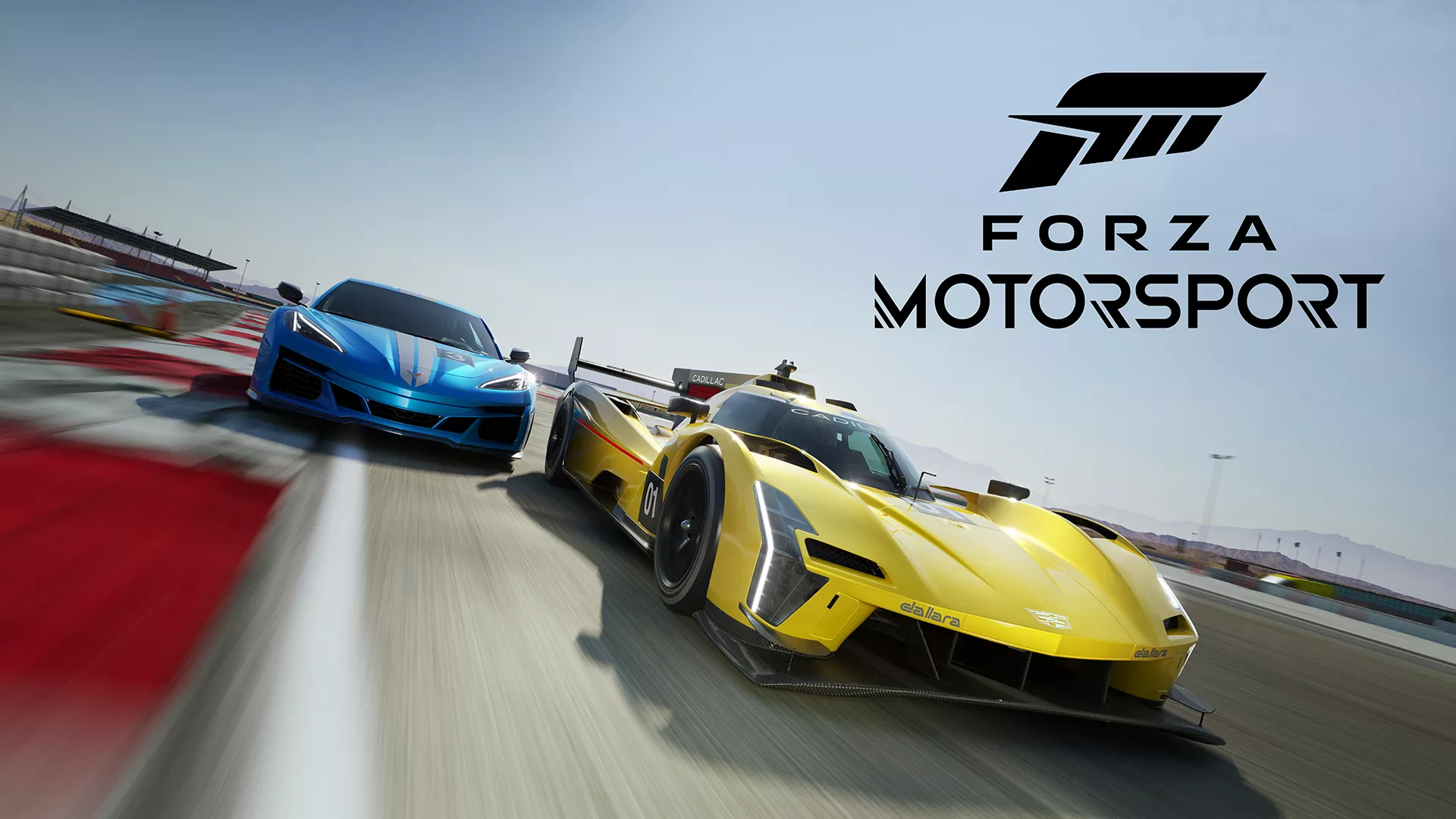As someone who has always had a fondness for the Forza series, I must admit that the Motorsport line of games from the last console generation did not leave a lasting impression. However, they still hold a special place in my heart. While Forza Horizon took the spotlight with its thrilling combination of arcade-style gameplay and realistic racing elements, the traditional Motorsport games offered a more subdued and restricted experience. It has been six long years since the release of the last installment, and as I sit down to write this Forza Motorsport review, I can't help but wonder if it will resonate with an audience that may have moved on to other racing titles.
Forza Motorsport, the highly anticipated reboot of the popular racing game series by American studio Turn 10, is finally here after a long wait since its last release in 2017. While the previous installment, Forza Horizon, took players on thrilling journeys through stunning landscapes, wreaking havoc on the environment, Motorsport takes a different approach.
This time, players are challenged with long-haul races on renowned circuits that are celebrated globally. With a wide array of championships featuring various types and styles of cars, the game pits you against the crème de la crème of racing talent, from iconic tracks like Silverstone to the legendary Suzuka. Get ready to experience the ultimate test of skill and speed in Forza Motorsport.
Forza Motorsport's Aesthetic Triumph
If you are familiar with playing any Forza Motorsport game in the past, then the introduction should not be unfamiliar to you. The music simmers with quiet strings beginning to rise, creating an atmosphere of anticipation. As the screen fades in, sleek shots of hypercars in darkness capture your attention, their curves and lines illuminated by the moonlight.
A gorgeously-voiced narrator adds to the allure, speaking eloquently about “the essence of speed” and “the thrill of the exhaust hum”. It's a familiar and comforting experience for long-time fans, a nostalgic exercise that instantly transports them back to the excitement of previous installments. However, this introduction also serves as an exhale of the new style, a preview of the current-gen graphical capabilities and the immense power of Forza Motorsport. With each passing second, the game's current-gen muscles flex, promising an immersive and exhilarating racing experience like never before.
The result in terms of graphics in racing games is truly exceptional. For years, racing games have been the benchmark for showcasing the graphical capabilities of gaming consoles, and once again, Forza Motorsport surpasses all expectations. The level of detail, the sensation of speed, and the overall immersive experience it provides is truly remarkable. The game's visuals are complemented perfectly by the sound design, as well as the inclusion of features like day/night cycles and dynamic weather. The effort put into creating a visually stunning and seamless experience is evident to all who play. It is a rare feat for a game to captivate me solely through its stunning graphics, but Forza Motorsport achieves this effortlessly.
Shortcomings in Realism and Track Diversity
Forza Motorsport, while impressive in its graphical capabilities, falls short in its representation of realistic damage models. The game showcases a singular aspect of what is possible with the chosen console, but upon closer inspection, the paint begins to peel. No matter the car or the force of impact, the damage models only display chipped paint jobs, resembling the result of someone keying the vehicle. This lack of realism may disappoint players who expect more accurate and detailed damage representations.
Audio Immersion and Accessibility
In the vast world of Forza Motorsport, with over 500 vehicles to choose from, each car manages to maintain its own unique identity. The game makes a bold statement by giving every single car a reason to exist and a distinct sound design. Some cars emit a thunderous roar as they aggressively downshift and their back end slightly buckles under the force.

On the other hand, there are cars that gracefully glide across the tarmac, completely unfazed by any bumps or dips in the road, with a subtle whistle accompanying their movement. This attention to detail and variety in sound design goes a long way in convincing players that Forza Motorsport is not just a run-of-the-mill racing game, but an immersive experience that captures the essence of each individual vehicle.
Forza Horizon 5 has made significant strides in addressing the issue of accessibility options within the series. Historically, the Forza games have struggled to find a balance between difficulty and accessibility, especially within the context of the open-world format. However, Forza Horizon 5 has managed to overcome this hurdle by offering a range of features that cater to players of all skill levels.
The inclusion of racing lines, ABS (anti-lock braking system), screen narration, and the use of rally terms for those who struggle with visual cues, ensures that anyone can easily acclimate to the game. These accessibility options not only make the game more inclusive, but also help players understand and navigate the severity of turns, enhancing the overall experience for all.
Despite Xbox's efforts in making their games accessible to a wide range of players, the core content of Forza Motorsport leaves much to be desired. While there is a decent variety of cars available, the same cannot be said for the tracks and their designs. Many of the new tracks, such as South Africa's Kyalami or Japan's Hakone, offer similar challenges to those already present in other tracks, with the latter being heavily reminiscent of the well-known Suzuka Circuit. This lack of originality and variety in the track designs hampers the overall excitement and immersion of the game, ultimately making it less enjoyable for players.
The lack of energy surrounding the cars and their championships is a glaring issue in the world of motorsport. Despite being a part of Forza Motorsport's Career mode, there is a distinct absence of excitement and anticipation. The build-ups to races are underwhelming, and the finales fail to evoke rapturous emotions. It seems as though the game is perpetually on the brink of endurance racing, but it never quite manages to break through that barrier. Even the much-touted day/night cycle fails to truly capture the essence of the transition from the vibrant daylight to the intense and unforgiving darkness of the night.
The game, in its attempt to maintain a sense of order and legality, seems to have lost its edge. The car leveling system, once a reliable feature in previous titles, has now become intertwined with the upgrade system, resulting in a convoluted and frustrating experience. The sense of progression that should come with leveling up your car feels incomplete and underdeveloped. Instead, it feels like playing with a toy car without the excitement of ramps and stunts. The game's fear of taking risks and breaking boundaries has hindered its potential for growth and innovation.
Forza Motorsport's multiplayer module offers the opportunity to create and race with friends, but it often feels like a replication of the single-player experience. The routine involves qualifying laps followed by a 5-8 lap race, with minimal rewards and no sense of excitement or glory. Instead, it feels more like a monotonous job that you clock into rather than an exhilarating fantasy. This lack of fanfare and glory is perhaps the biggest issue with Forza Motorsport, as it fails to capture the true essence of competitive racing.
A racing game is often seen as more than just a simple portrayal of wheels going around in circles. It has the power to create a unique identity and immerse players in a captivating virtual world. Examples like Project Gotham Racing showcasing the stunning scenery of London or Assetto Corsa's Black Cat County demonstrate how a racing game can establish a distinct atmosphere and setting.
Even renowned titles like Gran Turismo and Forza Motorsport have successfully made real-life tracks like Laguna Seca their own, offering players an unforgettable experience. These games prove that the logistics of a racing game go beyond mere gameplay mechanics, allowing players to explore and engage with a dynamic and immersive world.
The Legacy Challenge and Innovation
Forza Motorsport has always been known for its distinct identity and its ability to bring real-world circuits to life. It wasn't just about the famous tracks like New York, Fujimi Kaido, the Bernese Alps, Camino Viejo, Rio De Janeiro, or Maple Valley, but also about the unique touches of track design that paid homage to different cultures.

However, in the supposed reboot of the game, only Maple Valley makes a return, and even that is overshadowed by the game's focus on pushing the boundaries of graphics. What's more, the absence of a drag strip or a training ground to improve your skills is a disappointment, as these features are not only expected in any Forza game but also in any racing game in general.
This game represents the absolute minimum requirements for a racing game to succeed, and the fact that its latest iteration can only just surpass that threshold is concerning. It is disheartening to see that Forza Motorsport's presence in the gaming world seems to be driven by a sense of obligation rather than a genuine purpose to coexist alongside its superior counterpart, the Horizon series. This marks a significant departure from the series' previous installments and raises doubts about its future viability.
Verdict
Forza Motorsport may be visually stunning and accessible to all, but it falls short in terms of substance. The limited customization options for cars and the lackluster selection of tracks leave players wanting more. The races themselves feel rigid and devoid of excitement. It's like attending a race day with no passion or thrill in the air. While it's great to have a game that looks good, it ultimately fails to deliver the substance needed to make it a worthwhile experience.





